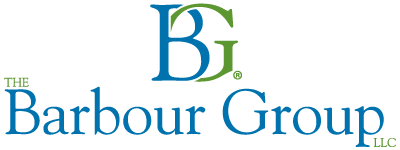It is becoming increasingly more difficult for businesses to obtain the bonding required to start new projects. This is especially true for small businesses that do not possess the resources larger companies might enjoy. I started my agency, The Barbour Group, LLC, in 2002, with the mission of helping construction companies acquire the bonding they need to survive and grow in the marketplace.
If you are not familiar with surety bonding, it is a contract among three parties — the contractor (principal), the project owner (obligee), and the surety—in which the surety guarantees payment (payment bond) by the contractor to all subcontractors and suppliers, and also guarantees the performance (performance bond) of the contractor. Each contractor, both prime and sub, obtains its own bonding.
Surety bonding can be an expensive endeavor, adding approximately $25,000 to a contractor’s annual general and administrative costs. These expenses may include retaining a CPA, establishing a continuity plan funded by life insurance, maintaining adequate insurance coverage, and implementing job-cost accounting software that is essential for tracking job progress and data for financial statements. However, contractors can plan for such costs in advance and allocate them to each job to recapture the expense.
Getting Started
Given today’s economic environment, the prequalification process is more rigorous. Retaining a contractor-oriented accounting firm can help companies obtain the desired bonding credit. CPAs certified public accountants) who have a passion for the construction industry can provide insight into the industry and the required accrual-based financial statements. They know the key players and can educate contractors on the pitfalls of profit fade (which happens when a contract is complete or near completion, yet continues to incur additional costs not factored into the overall cost of the contract). This is a red flag for sureties.
Contractors will usually need to provide CPA-prepared financial statements to the surety when a job will exceed $350,000. Through an express-bond application, a surety may approve a bond from $250,000 to $350,000 based on the contractor’s personal credit score and history with no requirement for financial information. However, only very small businesses can use express-bond programs.
For projects ranging from $350,000 to $500,000, a CPA-compiled statement is needed. Sureties will still look at personal credit scores, as well as PAYDEX scores, which rate how a business pays its invoices. Until a company is very strong and is receiving surety support of $10 million or higher, personal credit scores will be evaluated. While each surety has its own guidelines with regard to CPA financial reporting, most sureties will accept CPA-reviewed financial statements for jobs up to $10 million.
If seeking bonds for projects of $500,000 or more, the contractor will likely be required to produce a CPA-reviewed statement on the percentage-of-completion basis. Such statements are usually prepared at year-end, although onetime exceptions are granted if the first job requested is not timed well with year-end reporting. This method is not defined as the percentage left to bill on outstanding contracts. Rather, it is derived by dividing cost to date by total cost. This then determines if the job is under-billed (cost and estimated earnings in excess of billings) or overbilled (billings in excess of cost and estimated earnings). The CPA will reflect any overbilling (a liability) and under-billing (an asset) as line items on the balance sheet. These line items are two areas of great concern for the surety and are highly scrutinized during the underwriting process.
Accounting guidelines will only allow a contractor to show the additional costs associated with change orders until the change order is approved. Once approved, the financial statement can then include the profit associated with that change order. Updated work-on-hand schedules to track the backlog and progress of all work are usually requested on a quarterly basis.
Knowing the Limits
The financial condition presented in the contractor’s statement is not the only qualifier for bonding. Typically, sureties will only extend bonding credit up to 1.5 times the largest job completed. The amount of work a contractor can finance at any one time is called bond capacity, and is often defined as remaining costs to complete on all jobs (bonded and un-bonded). Because general contractors finance little of the overall work, sureties typically extend more capacity—about 20 times the working capital. On the other hand, for subcontractors that finance most of the work, sureties extend less capacity—about 10 times working capital.
Exceptions exist and often allowances are made for larger jobs if there is a teaming agreement or if joint-venture partners present greater experience and cash flow. Some sureties will provide bonding capacity for small business if they team with a financially stronger contractor. The teaming partner would be the subcontractor to the small business prime contractor. Often, the funds from projects structured with teaming arrangements will be controlled by an escrow agent. The escrow agent will receive the funds from the project owner, pay all subcontractors and suppliers first, and then pay the prime contractor its earned income. Such funds held in escrow are protected from outside claims. If the teaming subcontractor elects to indemnify for the prime contractor in lieu of posting a bond for its portion of work, the surety will want to disclose such indemnity to the contracting officer if the project is part of any federally certified program such as 8(a) or HubZone.
As for joint ventures, many sureties will only provide bonding support if they bond both partners. The joint-venture agreement should spell out the work to be performed by each party. For example, one joint-venture partner builds the shell and the other performs the interior work.
Often the best joint venture is one that is organized as an LLC, which is preferred by most sureties. Here, the equity in the joint venture will be reflected on the balance sheets of the participating companies as a line item called “equity in joint venture(s).” Note, however, that under the rules of the U.S. Financial Accounting Standards Board’s “Generally Accepted Accounting Principles” (FIN 46), if one joint-venture partner actually controls the joint venture, and the joint venture is deemed to be a variable-interest entity, the activities of the joint venture should be consolidated by the controlling partner, rather than accounted for under the equity method.
Alternative Resources
An alternative surety resource for contractors is the Small Business Administration (SBA). The SBA bond guarantee programs are designed to enable bonding credit for all small business contractors by guaranteeing up to 90 percent of the bonded risk. Small businesses do not have to be a participant in either the SBA’s 8(a) or small disadvantaged business program (SDB) program in order to participate in the SBA’s surety bond guarantee programs. There are two types of SBA plans. The Prior Approval Program, known as Plan A, requires that the bond account be submitted to both the corporate surety and the SBA for approval. The Preferred Surety Bond program, Plan B, is for corporate sureties that maintain, underwrite, and approve bonds on the SBA’s behalf.
The SBA’s bond guarantee programs will consider joint ventures as long as all joint venture partners do not exceed their respective North American Industry Classification System (NAICS) size standards. Every industry has its own standard. For example, the maximum to be considered small, for general contractors, is $33.5 million and for specialty trades, approximately $14 million. If a large general contractor is a joint venture partner, the SBA will decline the application.
Although the website www.sba.gov provides examples and insight into teaming agreements, this type of agreement is not yet included in the SBA’s regulation. Therefore, the prime contractor will need to demonstrate past performance and be financially strong enough to support the project.
Legislative Changes
The Barbour Group works with the SBA to improve the bonding process. Drawing on the talents of four federal lobbyist, Gil Genn, Esq. of Genn & Murphy, LLC, we have worked with U. S. Senator Benjamin Cardin (D-MD), member of the U.S. Senate Committee on Small Business and Entrepreneurship; Mary Landrieu (D-LA), committee chair; and Senator Olympia Snowe (R-ME), ranking member, to revamp the SBA bond guarantee programs. Prior to 2009, the SBA could not consider projects for contractors in excess of $2 million; and, the contractor’s sales cap (averaged over three years) could not exceed $7 million. In January 2009, Senator Cardin sponsored an amendment to The American Recovery and Reinvestment Act (ARRA), improving the SBA’s ability to guarantee surety bonds for stimulus-funded construction projects. The amendment also increased the SBA’s guaranteed bond cap from $2 million to $5 million with discretionary authority to cover individual contracts up to $10 million (for federal projects only), and increased the SBA bond program eligibility standards. If unable to secure bonds through the SBA bond guarantee program, individual surety is an option as prescribed by Federal Acquisition Regulation (FAR) Section 28.203. These new caps will expire in September 2010 unless new legislation is enacted.
Further, Congressman Elijah Cummings (D-MD) has sponsored H.R. 2991 that mirrors, to some degree, the SBA bond program for the U.S. Department of Transportation (DoT). The bill was referred on June 23, 2009, to the Subcommittee on Railroads, Pipeline, and Hazardous Materials with no action as of this writing. However, Congressman Cummings introduced an amendment to ARRA that appropriated $20 million to establish a Disadvantaged Business Enterprise Bonding Assistance Program that will provide reimbursements to small and disadvantaged businesses for the bonding premiums and fees they incur when they compete for or perform work on any DoT projects and on any projects funded by ARRA. Assistance is available for prime contractors and subcontractors, working at any tier, to reimburse premiums for performance, payments, or bid bonds. Reimbursements can also be obtained for fees charged by the SBA. For more information about this program, visit www.dot.gov/recovery/ost/osdbu/.
The surety industry, like all businesses, is experiencing an unfamiliar climate change. Fortunately, the new regulations for the SBA bond program occurred at an optimum time. Sureties are finding SBA support to be a solid solution. As a result, SBA volume has increased significantly, with 3,037 bonds issued during the first two months of 2010. In 2009, 6,135 bonds were issued during the entire year. In addition, three more sureties have entered the SBA program so far this year, for a total of 16 participating sureties. The best advice for a contractor is to find the most qualified and reputable CPA that you can afford; one who is knowledgeable in construction accounting and known by your bond agent or surety.
From the May/June 2010 Issue of Minority Business Entrepreneur. For subscription information, go to mbemag.com




